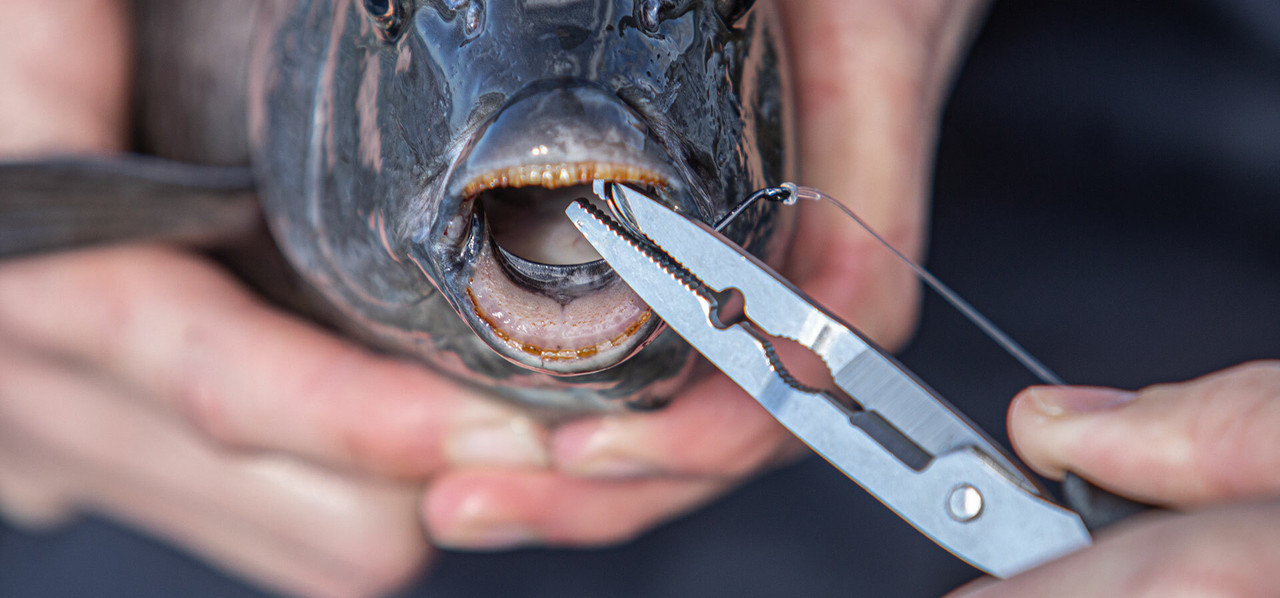A Tackle Shop Guide to Fishing Pliers
A good pair of fishing pliers is one of the most-used tools in any angler's kit. But with different materials, coatings, and jaw styles to choose from, picking the right pair can be a challenge. This guide will go beyond the basics and break down the specific features you should look for to choose a pair that will last.
A Note From Our Local Experts
"The most common reason a customer walks in to buy a new pair of pliers is because their old ones have rusted shut. It’s a classic story. That's when we explain the real difference between a cheap 'tackle box' pair and a quality set of purpose-built fishing pliers. It comes down to the materials. Investing in a pair made from good quality stainless steel, or a brand that sports a protective coating, is the key to them lasting more than a single season. A good pair of pliers for fishing, especially around saltwater, is a long-term investment, and it’s worth spending a little extra to get one that offers better overall long term perfomance."
- Ben Czulowski, Owner, Fishing Tackle Shop (Ocean Storm) | 20+ Years in fishing retailing
Why Pliers are Essential for Hook Removal
Using your hands to remove a hook is a bad idea for two key reasons. Firstly, it puts your fingers dangerously close to sharp teeth and the hook points themselves. Secondly, it's often more damaging for the fish. A good pair of long-nose pliers allows you to get a firm grip on the hook and back it out cleanly and quickly, which is crucial for a healthy release. It's safer for you and better for the fish.
A Guide to Fishing Plier Styles
The shape of your pliers' jaws determines their specialty. Here’s a breakdown of the most common designs for Australian anglers:
✔
Long Nose & Bent Nose: The long, thin jaws of these pliers are essential for safe hook removal, allowing you to reach deep inside a fish's mouth while keeping your hands clear of sharp teeth. A long bent nose plier offers an even better angle for reaching awkward or tricky hook-sets.
✔
Split Ring Pliers: A non-negotiable tool for any serious lure angler. These feature a small, pointed tooth on the tip of the jaw designed to effortlessly open a split ring, making the frustrating job of changing hooks quick and simple.
✔
Multi-Function Pliers: The ultimate all-in-one tool. A good pair of multi-function pliers will combine long jaws for unhooking with a dedicated set of sharp side cutters for braid and leader, and sometimes even a crimping section, covering all your rigging needs in a single tool.
Pro-Tips for Your Fishing Pliers
- Protect Your Braid Cutters: The sharp, hardened cutters on a good pair of fishing pliers are designed specifically for cutting braid and monofilament. Never use them to cut hooks or wire. This will chip or shatter the cutting edges, rendering them useless for slicing cleanly through braid.
- Rinse, Dry, Lubricate: To prevent rust, always give your pliers a quick rinse with fresh water after a trip, dry them thoroughly, and then apply a light spray of a water-displacing lubricant like Inox.
- Use a Lanyard and Sheath: A lanyard is the cheapest insurance against losing your pliers overboard. A belt-mounted sheath is the most practical way for a land-based angler to keep their most important tool within immediate reach.
Frequently Asked Questions
What's the real difference between standard stainless steel and a more expensive coated pair (e.g., Teflon or Titanium)?
It comes down to long-term corrosion resistance. While standard stainless steel is good, a premium coating like Teflon or Titanium provides an extra, super-hard barrier against saltwater. This means the pliers will resist surface rust for much longer and the moving parts will often remain smoother for years of use.
Are all split ring tips on pliers the same?
No, and this is a critical detail. A fine, narrow tip is needed to open the tiny split rings found on a small bream lure. For heavy-duty offshore lures, you will need a larger, more robust split ring plier with a bigger tip to handle the stronger rings.
How important are the grips on a pair of fishing pliers?
They are incredibly important. Non-slip, comfortable grips aren't just a luxury; they are a critical feature that prevents hand fatigue and ensures you have a secure hold when dealing with a thrashing fish and sharp hooks in wet, slippery conditions.



